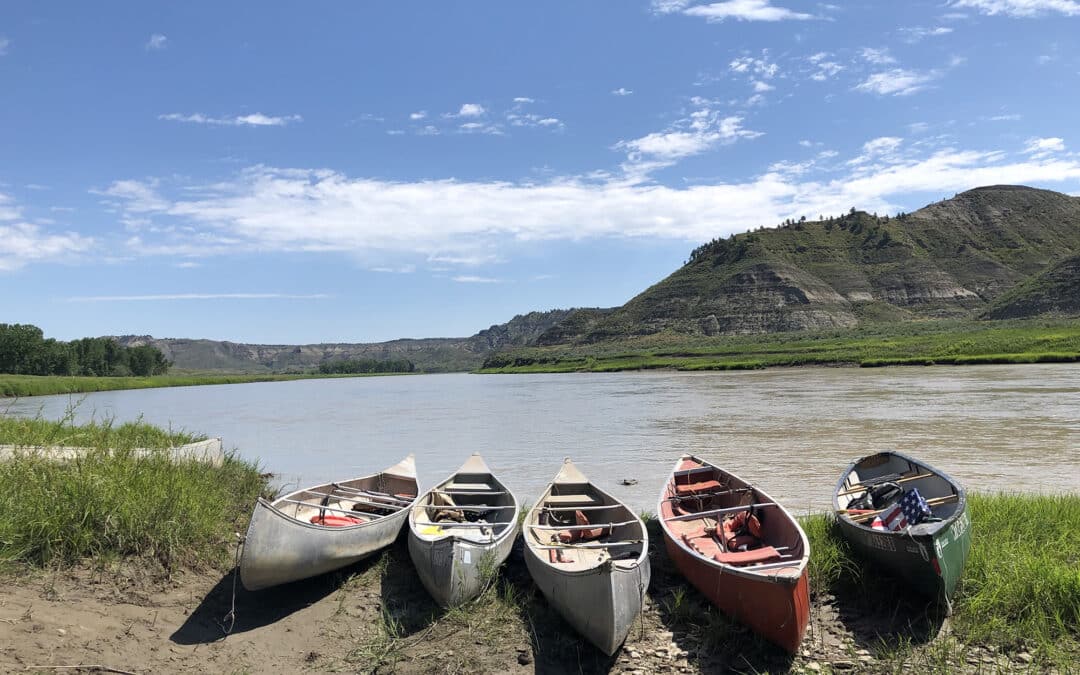Exploring Late Cretaceous Wetland Ecosystems Part 2: Dinosaurs and Vertebrate Microfossils in Montana
Overview: Nine students will collect, identify, and interpret the fossils of backboned animals found in the classic Cretaceous Judith River Formation of Montana, with an aim of exploring diversity before the mass extinction event that wiped out the dinosaurs. The Judith River Formation preserves abundant vertebrate microfossil bonebeds (VMBs), which are concentrated deposits of mostly small bones and teeth from diverse organisms that inhabited ancient swamps and lakes (from tiny fish to giant dinosaurs, and everything in between). Students will work with collections housed at Macalester College, and will conduct field-based research in Montana, where they will discover, describe, and sample VMBs. The group will also learn about diverse geoscience careers, through workshops and tours with museum curators (Science Museum of Minnesota and Museum of the Rockies), and the Bureau of Land Management (Lewistown, Montana). Our work will yield important insights into coastal plain ecosystems during the Late Cretaceous.
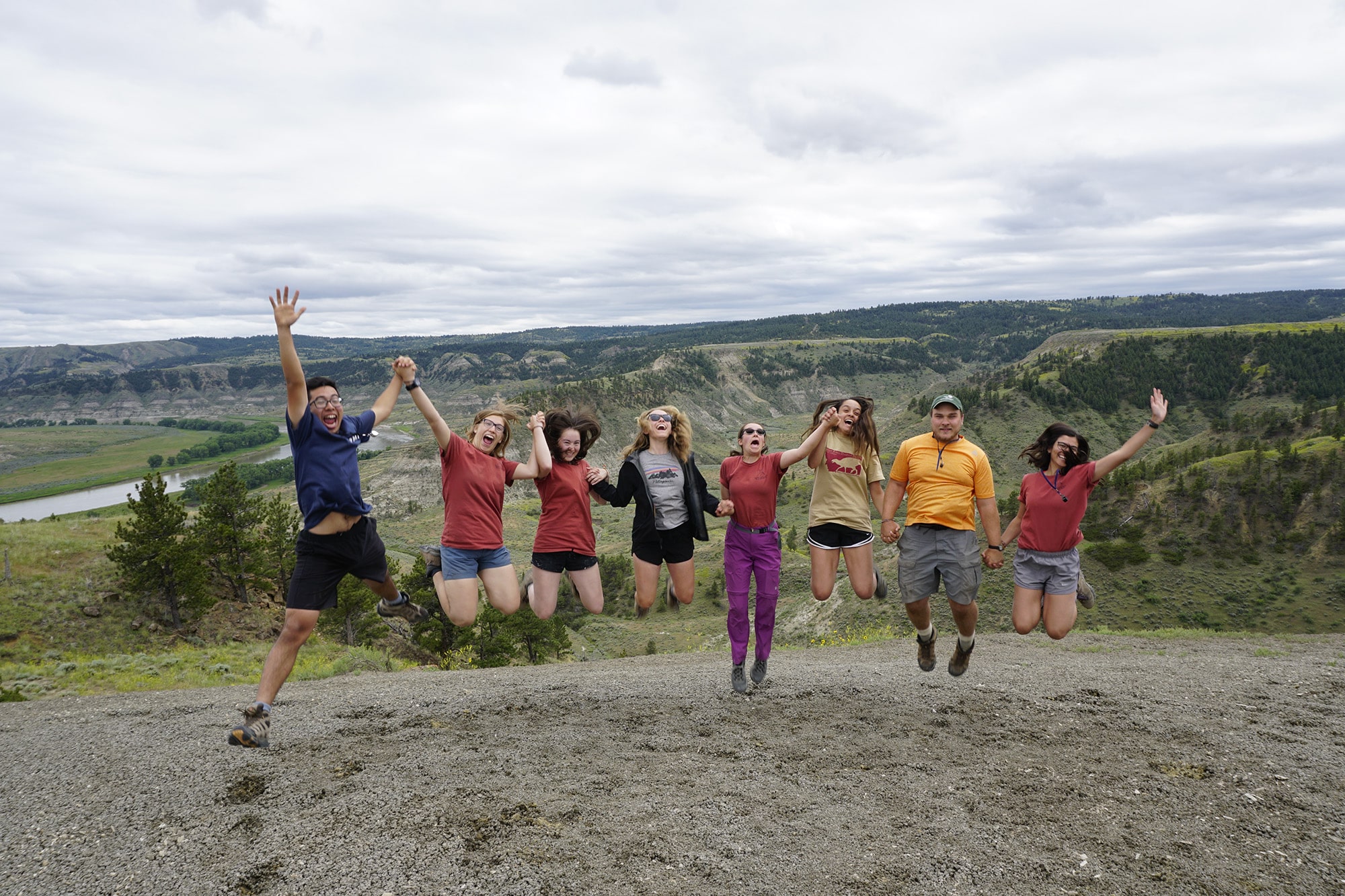
Students in the field, Upper Missouri River Breaks National Monument, Montana.
When: June 23 – July 27, 2022 (tentative)
Where: St. Paul/Minneapolis, Minnesota (introduction and collections/lab work); Upper Missouri River Breaks National Monument, Montana (Judith River Formation, field work).
Who: Nine students and project leaders Dr. Raymond Rogers (Macalester College, rogers@macalester.edu), and Dr. Kristi Curry Rogers (Macalester College, rogersk@macalester.edu)
PROJECT DESCRIPTION
Vertebrate microfossil bonebeds (VMBs) are concentrated deposits of small, disarticulated bones and teeth of backboned animals. They are powerful records of ancient ecosystem diversity, because they preserve the remains of tiny organisms (like fish and salamanders), as well as the fossils of bigger creatures including crocodilians and dinosaurs (Figure 1). VMBs are fairly common in ancient terrestrial fossil records, where they have been sampled and studied to recover otherwise rarely found species. They are the richest source of Mesozoic mammal fossils, and allow paleontologists to investigate diversity in ancient vertebrate communities.
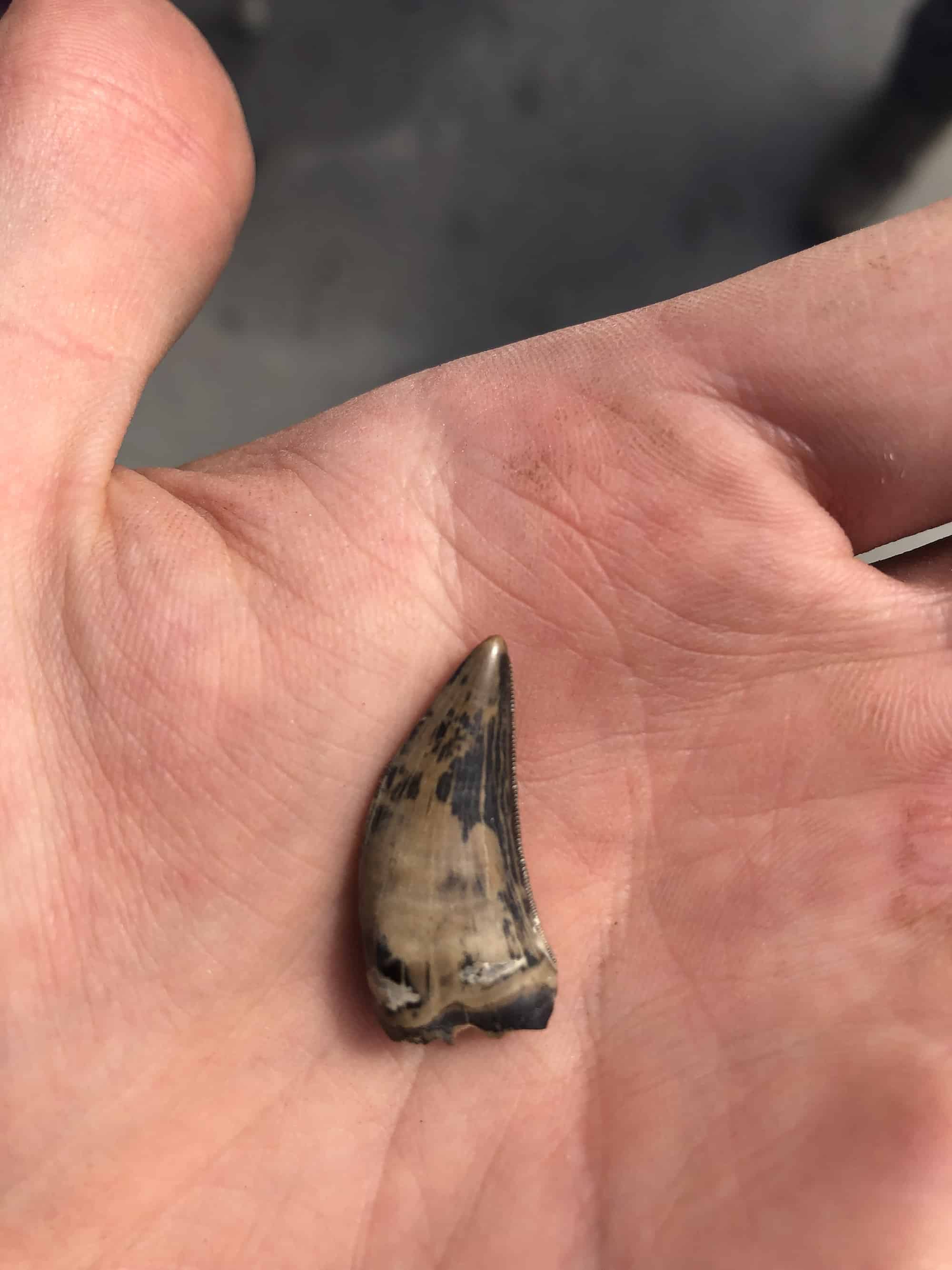
Figure 1: A theropod dinosaur tooth collected in the Judith River Formation VMBs. Other fossils include bones, teeth, and scales from fish, amphibians, lizards, crocodilians, and dinosaurs (including birds), and mammals.
To date, most studies of VMBs have focused only on taxonomic and faunal data. As a result, they typically lack detailed consideration of sedimentology as well as an understanding of the processes that led to fossilization after death (the study of taphonomy). A poor grasp of these details precludes a comprehensive understanding of these important sites.
Our Gateway Keck project will examine the taxonomy, taphonomy, and paleoecology of a select set of VMBs from classic localities in the Judith River Formation of north-central Montana. The VMBs in the Judith River Formation occur in the modern-day Upper Missouri River Breaks National Monument, and more than 150 years ago, this area yielded the very first skeletal remains of dinosaurs known in North America. Because of the amazing rocks and fossils, this field area in Montana has been the focus of the Project Dorectors’ research for more than 20 years.
Students will work with the project leaders as they study VMBs both in collections at Macalester College and in the field in Montana, with the goals of:
(1) determining the identities of species preserved in Judith River Formation VMBs to generate faunal lists.
(2) documenting bone surface modifications (e.g., bite marks, scratch marksm evidence of digestion) that will help elucidate the variety of processes that transpired post mortem as the biological remains made their way to the fossil record.
(3) discovering, describing and sampling VMBs in the Montana field area.
Their efforts will advance our understanding of diversity in the Late Cretaceous of Montana and yield novel insights into how organisms make the transition from the living community to the fossil record.
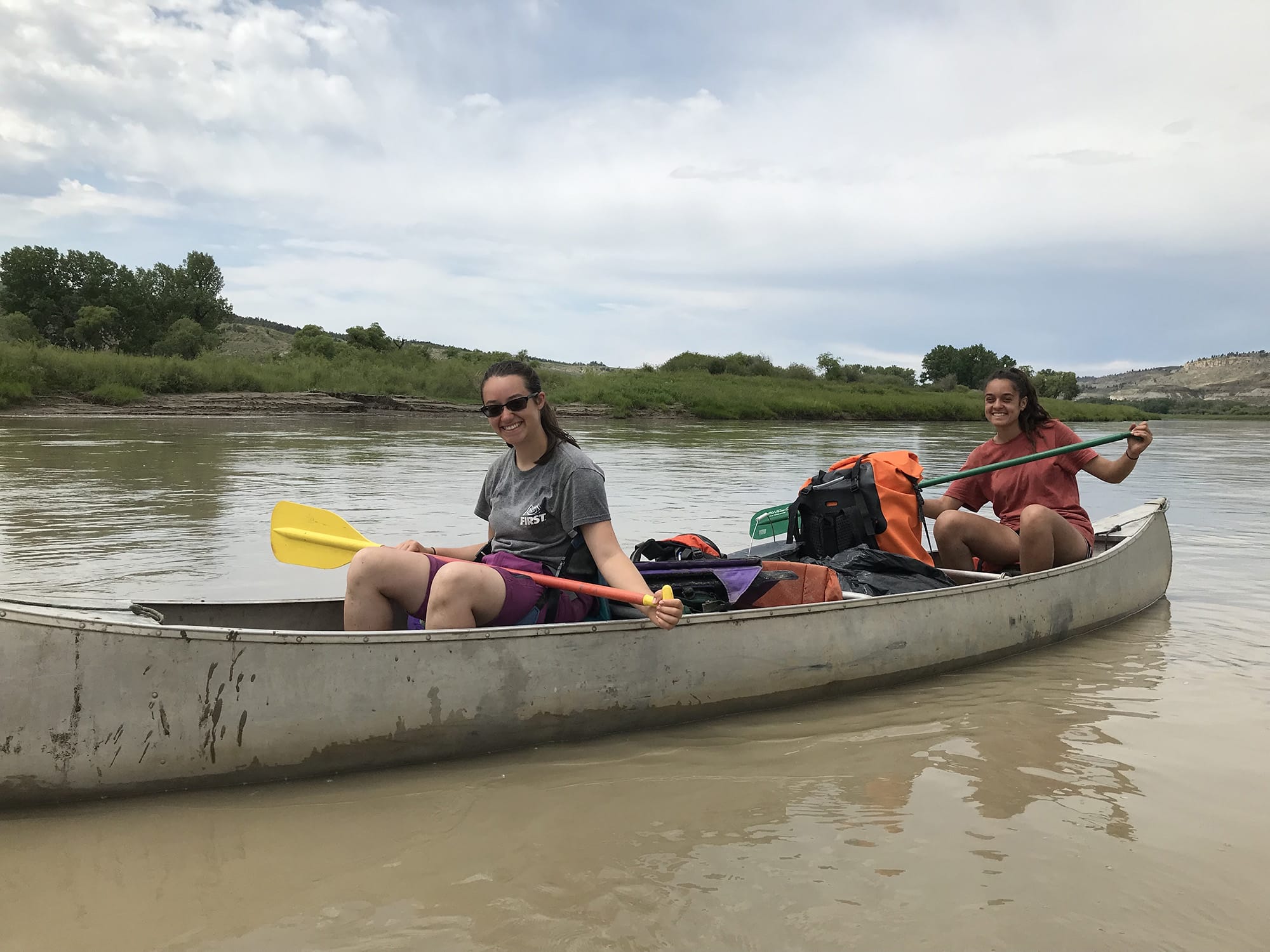
Figure 2: Exploring Cretaceous rocks in search of fossil localities in the Upper Missouri River Breaks National Monument. In this roadless area, canoes are great ways to get to remote exposures.
Potential Projects: Student projects will be designed to advance the ongoing research of the Project Directors as it relates to VMB diversity and taphonomy. At the outset, students will work in teams to sieve, recover, and identify vertebrate and invertebrate fossils from bulk matrix of the Judith River Formation in storage here at Macalester College. After some time spent on focused fossil recovery and ID, students will work in pairs to describe and interpret their fossil collections. Specific projects will include:
- Taxonomic characterization of fossil collections. Students with interests in paleoecology and evolution will explore the biodiversity of ancient lacustrine (lake/pond) settings from the Judith River Formation. They will tabulate and compare faunal lists (presence/absence and relative abundance) and ultimately reconstruct and compare the faunal membership in ancient freshwater communities of Late Cretaceous Montana.
- Taphonomic characterization of fossil collections. Students with interests in fossil preservation will describe bone modification features, including breakage patterns, evidence of rounding and abrasion, and tooth marks (and potentially other evidence of feeding/digestion). A compendium of images detailing taphonomic modification features will be produced for the Judith River Formation.
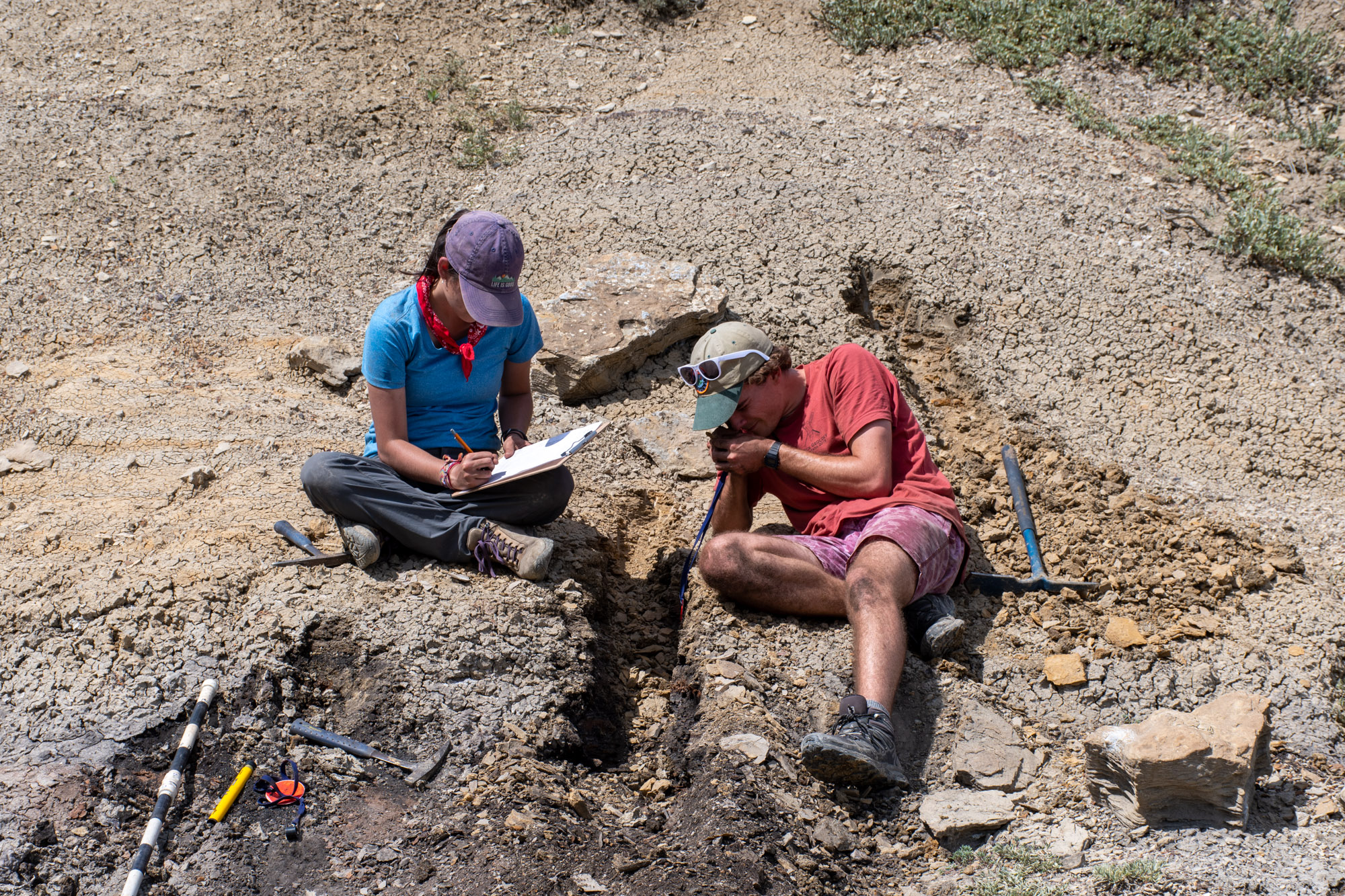
Figure 3: Measuring section in the Judith River Formation.
PROJECT LOGISTICS
Our tentative dates are June 23-July 27, 2022
Weeks 1-2. We’ll meet at Macalester College and students will be housed in dorms on campus until we depart for the field. While at Macalester, the group will dine in the Macalester dining hall, but there will be some opportunities to shop and cook dinners together, independent of the project leaders but with the help of their peer mentor. These first weeks will be spent in the labs and classrooms at Macalester, where students will be introduced to the project through a series of focused lectures, discussions, and hands-on experiences (e.g., fossil extraction, anatomy, organismal diversity, fossil identification, methods of taphonomic characterization, bone histology).
Weeks 3-4. We’ll depart Macalester and travel to Montana where we will visit classic paleontological localities and study the VMB sites we have been working on in situ within the rocks. We will also prospect, explore, and discover new sites, while honing field skills. During this interval we will be camping in remote, roadless areas, canoeing to localities, without access to cell phones, electricity, or running water. During these weeks students will also visit the Bureau of Land Management and the Museum of the Rockies to learn about career opportunities in geoscience.
Week 5. We’ll return to Macalester for the last week so that we can integrate materials collected in the field into the collection, and assemble the text and imagery for two GSA poster presentations in October (see “Professional Development” below).
Safety
The project directors are experienced field scientists with decades of experience working at these remote field localities. They are familiar with safety issues specifically related to hiking, camping, wildlife, and rapidly changing weather conditions. There is little question that there are a host of inherent risks in this proposed work, but we will minimize this risk through training, communication, assessment of student abilities, and planning. We’ll have a satellite phone and wilderness first aid kits at all localities in case of emergency. Here we briefly address the most common concerns.
Hiking/Camping/Canoeing: Our field work will take place in remote regions and will include a significant amount of hiking and canoeing. Students will be trained by the project directors in camping/hiking/canoeing safety. When canoeing on the Missouri River, students will be required to wear life jackets, and will work in teams to ensure safety. Students should be prepared to “unplug” during this part of our work – there will be no cell phone access, running water, or electricity when we are on the river.
Wildlife: Our field work will take place in the Upper Missouri River Breaks National Monument, inhabited by wildlife including rattlesnakes, black bears, and mountain lions. Students will be trained by the project directors in camping/hiking safety around these wildlife risks.
Weather conditions: The weather in Montana can be quite unpredictable and variable, with some days/nights up to 100° F and others at/near freezing temperatures. Hot, sunny days, heavy rain and strong winds, hail, and snow are all possible. Warm clothing and layers are necessary, including rain gear. A day pack (medium sized backpack) is important for all students so they can carry sufficient clothing, food, and 2-3 large water bottles. Sunscreen, hats and gloves, sunglasses, and sturdy hiking shoes/boots are key for student safety and comfort. The project directors will send out a detailed packing list for students ahead of time.
PROFESSIONAL DEVELOPMENT
This Gateway Keck project will allow students to develop skills that will last long after the summer is over. Working and living together in the field, collaborating to complete a project from start to finish, and beginning to develop a network of friends and colleagues all build resiliency, competencies, and expertise. Students will work on real scientific questions, using standard and state-of-the art field and lab equipment; they will also receive training in professional science communication. In addition, students will have chances to interact with people across the workforce working as professional geoscientists, from professors (the Project Directors), paleoartist, museum professionals (at the Science Museum of Minnesota and the Museum of the Rockies), to those in government positions (Bureau of Land Management employees). This project will culminate with the poster presentations at the Geological Society of America meeting in Denver, Colorado, 9-12 October 2022.
Selected References
Brinkman, D.B. 1990. Paleoecology of the Judith River Formation (Campanian) of Dinosaur Provincial Park, Alberta, Canada: evidence from vertebrate microfossil localities. Palaeogeography, Palaeoclimatology, Palaeoecology 78:37-54.
Brinkman, D.B., D.A. Eberth, & P. J. Currie. 2007. From bonebeds to paleobiology: applications of bonebed data. In: R. R. Rogers, D. A. Eberth, and A. R. Fiorillo (eds.), Bonebeds: Genesis, Analysis, and Paleobiological Significance. University of Chicago Press, Chicago.
Bryant, L.J. 1989. Non-dinosaurian lower vertebrates across the Cretaceous-Tertiary boundary in northeastern Montana. University of California Publications in Geological Sciences 134:1-107.
Demar, D.G., Jr., & B.H. Breithaupt. 2006. The nonmammalian vertebrate microfossil assemblages of the Mesaverde Formation (Upper Cretaceous, Campanian) of the Wind River and Bighorn Basins, Wyoming. In: S. G. Lucas & R. M. Sullivan (eds.), Late Cretaceous Vertebrates from the Western Interior. Bulletin of the New Mexico Museum of Natural History and Science 35:33-53.
Estes, R., & P. Berberian. 1970. Paleoecology of a Late Cretaceous vertebrate community from Montana. Breviora 343:1-35.
Leidy, J. Notice of remains of extinct reptiles and fishes, discovered by D. F. V. Hayden in the Bad Lands of the Judith River, Nebraska Territory. Proceedings of the Academy of Natural Sciences of Philadelphia vol. 8 (1856): 72-73.
Lillegraven, J.A., & J.J. Eberle. 1999. Vertebrate faunal changes through Lancian and Puercan time in southern Wyoming. Journal of Paleontology 73(4):691-710.
Rogers, R.R. 1995. Sequence stratigraphy and vertebrate taphonomy of the Upper Cretaceous Two Medicine and Judith River Formations, Montana. Unpublished Ph.D. Thesis, University of Chicago, Chicago.
Rogers, R.R. 1998. Sequence analysis of the Upper Cretaceous Two Medicine and Judith River formations, Montana: nonmarine response to the Claggett and Bearpaw marine cycles. Journal of Sedimentary Research 68:615-631.
Rogers, R.R. & M.E. Brady. 2010. Origins of microfossil bonebeds: insights from the Upper Cretaceous Judith River Formation of north-central Montana. Paleobiology 36:80-112.
Rogers, R.R., K.A. Curry Rogers, B.C. Bagley, J.J. Goodin, J.H. Hartman, J.T. Thole, & M. Zatoń. 2018. Pushing the record of trematode parasitism of bivalves upstream and back to the Cretaceous. GEOLOGY 46: 431-434.
Rogers, R.R., K.A. Curry Rogers, M.T. Carrano, M. Perez, & A. Regan. 2017. Isotaphonomy in concept and practice: an exploration of vertebrate microfossil bonebeds in the Upper Cretaceous (Campanian) Judith River Formation, north- central Montana. Paleobiology 43:248-273.
Wilson, L.E. 2008. Comparative taphonomy and paleoecological reconstruction of two microvertebrate accumulations from the Late Cretaceous Hell Creek Formation (Maastrichtian), eastern Montana. Palaios 23:289-297.

